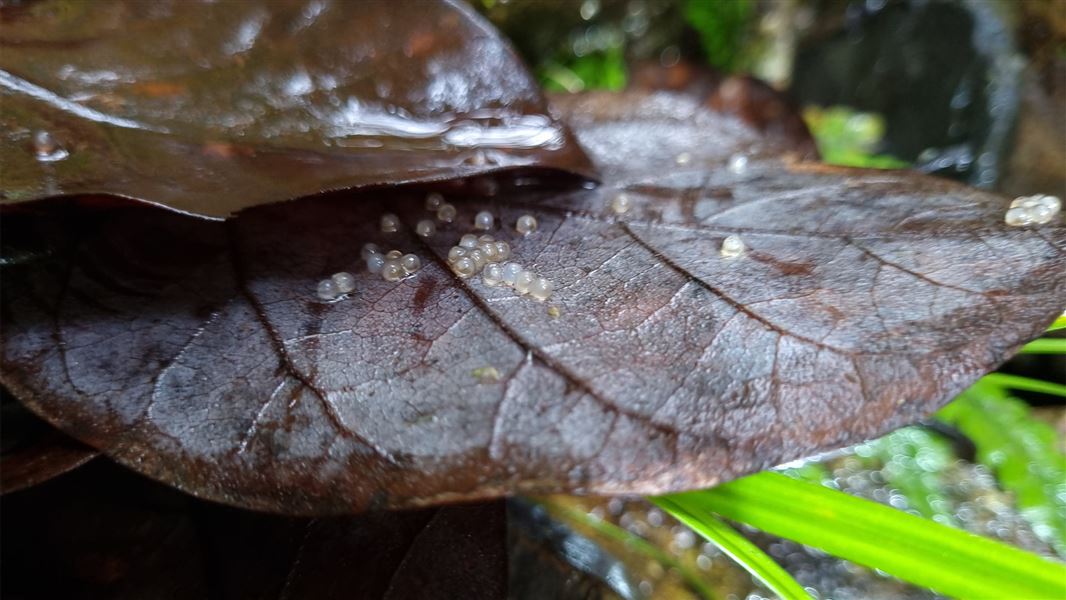Archived content: This media release was accurate on the date of publication.
Date: 23 July 2024
Trail cameras have caught rats in the act of eating shortjaw kōkopu eggs in Northland’s Waipoua Forest. This is bad news for the threatened fish, but Te Roroa and DOC immediately leapt into action to protect the precious eggs.
DOC ranger Fern Donovan discovered three shortjaw kōkopu ‘nests’ – more than 50 eggs in a cluster – in Autumn 2023. This was the first time a shortjaw nest had been documented from Northland.
“I was astonished to find the nests. Until this discovery, the only shortjaw spawning site found in the whole country was in Taranaki.
“I set up a trail camera to monitor the nest and visited it daily. I was gutted to find the nest had fewer and fewer eggs each day.
“When I checked the trail cam, it showed a rat visiting multiples times scoffing all the fish eggs.
“I call the fish eggs ‘protein pearls’, and of course they’re appealing to rodents. After 10 days, the only eggs left behind were rotten, unviable and inedible, even for rats.”
Taoho Patuawa, science advisor for Te Iwi o Te Roroa, says Fern’s discovery is a clear demonstration of pests’ impact on taonga species.
“We now have certainty that rats are putting pressure on shortjaw kōkopu at this critical part of their lifecycle. It’s on us to act.”
The footage was all the evidence needed for Te Roroa and DOC to establish intensive predator control leading up to this year’s shortjaw spawning season, which peaks in May/June.
Rodent tracking tunnels showed the predator control strategy worked. In the predator control zone just 3 per cent of tracking tunnels were visited by rats – compared to 96 per cent in non-treated areas.
Fern found three more nests earlier in the year, and is hoping they’ll fare better than the nests discovered last year.
“Some of the eggs have developed tiny black eyes – a promising sign that they’ll make it. Last year, all the eggs were eaten by that stage.”
Taoho says he’s looking forward to seeing what can be achieved to protect the threatened fish this year and beyond.
“It’s good to have such a concentrated effort in our forest. What we’re discovering will be valuable for protecting this taonga species both here and in other parts of Aotearoa, and ensuring shortjaw kōkopu can thrive.”
Background information
DOC, Te Roroa, and other organisations are working together to restore the Waipoua River from mountains to sea. This project is part of DOC’s Ngā Ika e Heke freshwater migratory fish work to secure populations of shortjaw kōkopu, īnanga, longfin eel/tuna and lamprey across Aotearoa New Zealand.
The rohe of Te Roroa includes Waipoua forest, home of Tane Mahuta.
Shortjaw kōkopu are only found in Aotearoa and are the rarest of the six native fish species caught as whitebait. They have a threat status of Threatened – Nationally Vulnerable. A ‘nest’ of shortjaw kōkopu is 50 or more eggs, found in a cluster.
Contact
For media enquiries contact:
Email: media@doc.govt.nz
